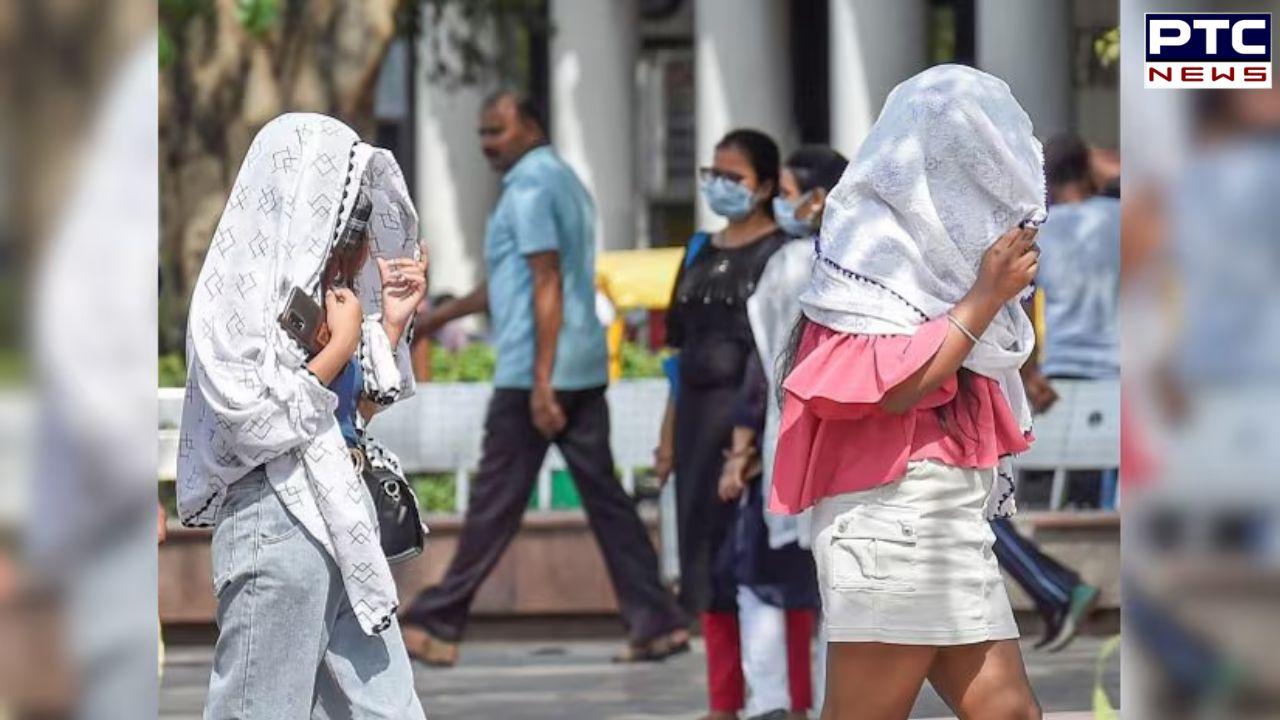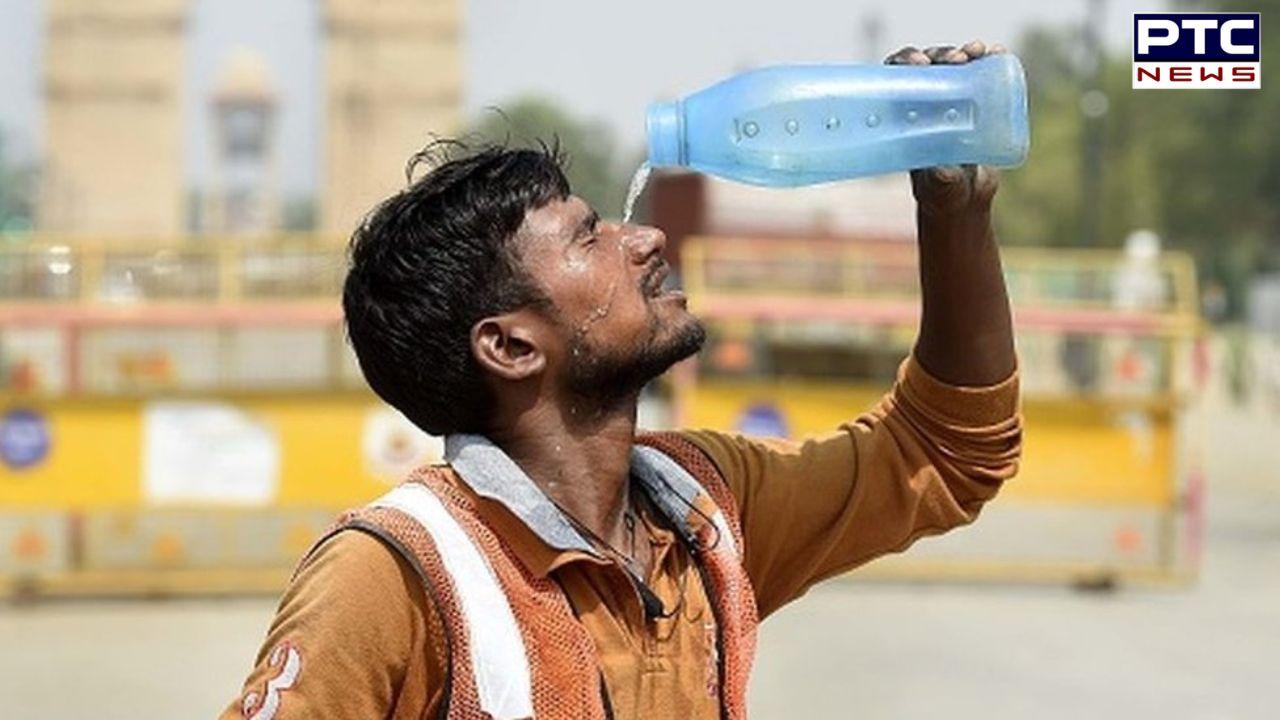- November 23, 2024
- Updated 5:24 am
Government data reveals 46 heatstroke deaths in May
PTC News Desk: According to government data, India has recorded 56 confirmed cases of heatstroke deaths in the last three months, with 46 of those deaths occurring in May alone.
Maximum deaths have been reported from Madhya Pradesh (14) and Maharashtra (11), Andhra Pradesh (6), and Rajasthan (5).
As part of the National Heat-Related Illnesses and Death Surveillance, the Center monitors heat-related cases and fatalities.

Under the Center’s surveillance program, 24,849 cases of heatstroke have been documented since March 1; 19,189 of these cases were reported in May.
Madhya Pradesh has reported the highest number of heatstroke cases (6,584), followed by Rajasthan (4,357 cases), Andhra Pradesh (3,239 cases), Chhattisgarh (2,418), Jharkhand (2,077 cases), and Odisha (1,998 cases).
The India Meteorological Department (IMD) reports that there were two strong humid heat spells in April: one between April 5 and 7 over the east and southeast of the Indian Peninsula, and the other between April 15 and 30 over Odisha and West Bengal, which spread to Bihar, Jharkhand, and the South Peninsula of the country.
Between May 1 and May 7, there were two more severe heat waves that affected regions of Peninsular India, Gangetic West Bengal, and Odisha.
The second period, as reported by IMD, occurred from May 16 to May 26. During this time, Rajasthan saw nine to twelve heat wave to severe heat wave days, with maximum temperatures approaching fifty degrees Celsius. Delhi NCR, south Haryana, Southwest UP, and Punjab region experienced five to seven heat wave days. Typically, a heat wave lasting four to eight days occurs in the summer months of March, April, and May.
“The relative humidity during the heat waves ranged between 20 and 30 percent in northwest India and well over 50 percent in coastal parts of east India. We believe that a significant number of people may have been affected by the humid heat, which can have very serious health effects. Northwest India is in the same boat,” a senior IMD official stated, requesting anonymity.
The Lok Sabha elections, which took place between April 19 and June 1, fell during these periods of extreme heat.
Scientists have found that even fit individuals may overheat and possibly die within six hours at wet bulb temperatures exceeding 35°C.
However, the exact mixture is not always necessary to kill. According to “the emergence of heat and humidity too severe for human tolerance,” a paper led by scientists from Jet Propulsion Laboratory/California Institute of Technology, USA, Department of Earth and Environmental Sciences, Columbia University, much lower values have serious health and productivity impacts. A wet-bulb temperature (TW) of 35°C marks our upper physiological limit.
In addition to vulnerable groups like the elderly and young children, people with comorbid conditions like obesity, chronic heart, lung, and kidney diseases, and those taking specific medications like beta-blockers, diuretics, and antidepressants are more likely to be affected.
According to data from the national monitoring program, 605 cardiovascular fatalities were recorded in May and were associated with periods of extreme heat.
Experts note that there are two types of heat stroke: non-exertional and exertional. The former happens in a few hours, especially if a person is engaging in vigorous physical activity in hot and muggy settings, whereas the latter typically takes many days due to exposure to heat wave conditions.
Loss of electrolytes and water can strain the heart severely.
The precise temperature at which cardiovascular collapse takes place, however, differs from person to person since it is influenced by medications, comorbid conditions, and other elements that may either cause or postpone organ failure.
Although heat stroke is a medical emergency, physicians emphasized that if steps are done early to prevent excessive heat exposure, deaths may be avoided.
“The victim should be brought to a hospital or doctor as soon as possible if heat stroke is suspected. The sick person should also be moved into the shade, given a cool shower, or have a wet towel placed over their head, neck, feet, and palms to lower their body temperature, according to Dr. Rommel Tickoo, director of internal medicine at Max Super-specialty Hospital in Saket.
Additionally, doctors advise against direct sun exposure, particularly during the hottest times of day.
Avoiding the Sun between 10 a.m. and 4 p.m. is advised. However, it’s crucial to have at least a few glasses of water right before you leave the house if you must go outside. Always have a bottle of water with you, and continue to have a glass every hour. Drink butter milk, coconut water, or lime water to stay hydrated and replace lost salts and minerals, the speaker continued.
Also Read: Bomb threat note on Vistara flight from Paris sparks full-scale emergency at Mumbai Airport
Recent Posts
- Crown of goddess Kali, gifted by PM Modi, stolen from temple in Bangladesh
- Hezbollah leader survives assassination attempt amid Israeli strikes that kill 22 in Beirut
- ਕ੍ਰਿਕਟ ਦੇ ਬਦਲੇ ਨਿਯਮ, ਹੁਣ ਇਸ ਕੇਸ ‘ਚ ਦੁਬਾਰਾ ਨਹੀਂ ਮਿਲੇਗੀ ਬੈਟਿੰਗ, ਮੰਨਿਆ ਜਾਵੇਗਾ
- ਸਚਿਨ ਤੇਂਦੁਲਕਰ ਦੇ ਬਰਾਬਰ ਪਹੁੰਚੇ ਜੋ ਰੂਟ, ਪਰ ਵਿਰਾਟ ਦੇ ਇਸ ਰਿਕਾਰਡ ਤੋਂ ਅਜੇ ਵੀ ਦੂਰ
- Ratan tata death: ਸਿਰਫ ਵੋਲਟਾਸ ਹੀ ਨਹੀਂ, ਸਵੇਰ ਤੋਂ ਰਾਤ ਤੱਕ ਤੁਹਾਡਾ ਕੰਮ ਟਾਟਾ ਦੇ ਬਿਨਾਂ ਨਹੀਂ ਚੱਲ ਸਕਦਾ
